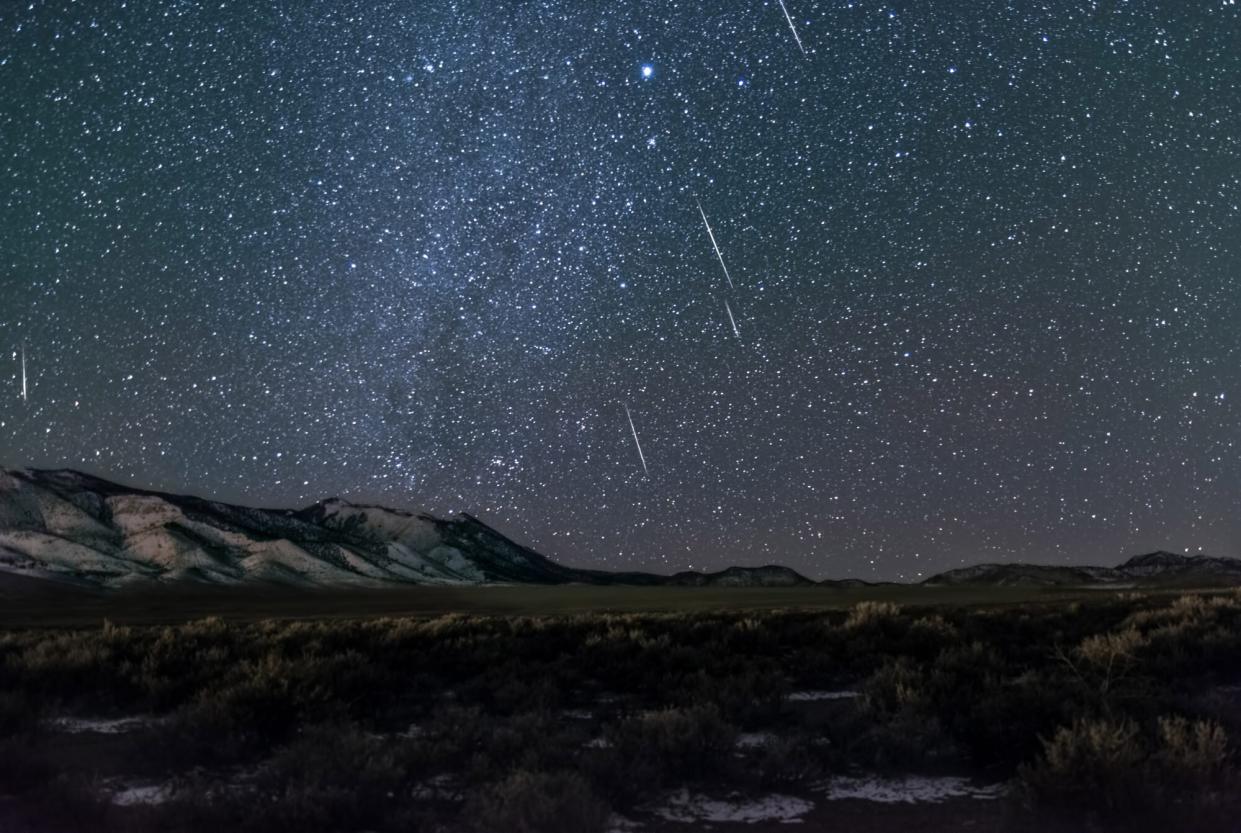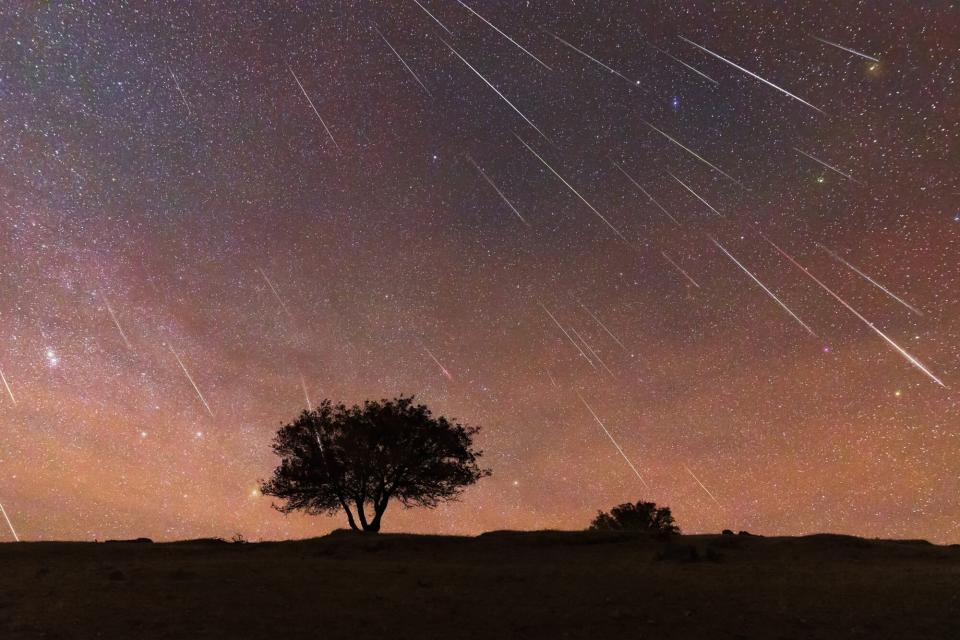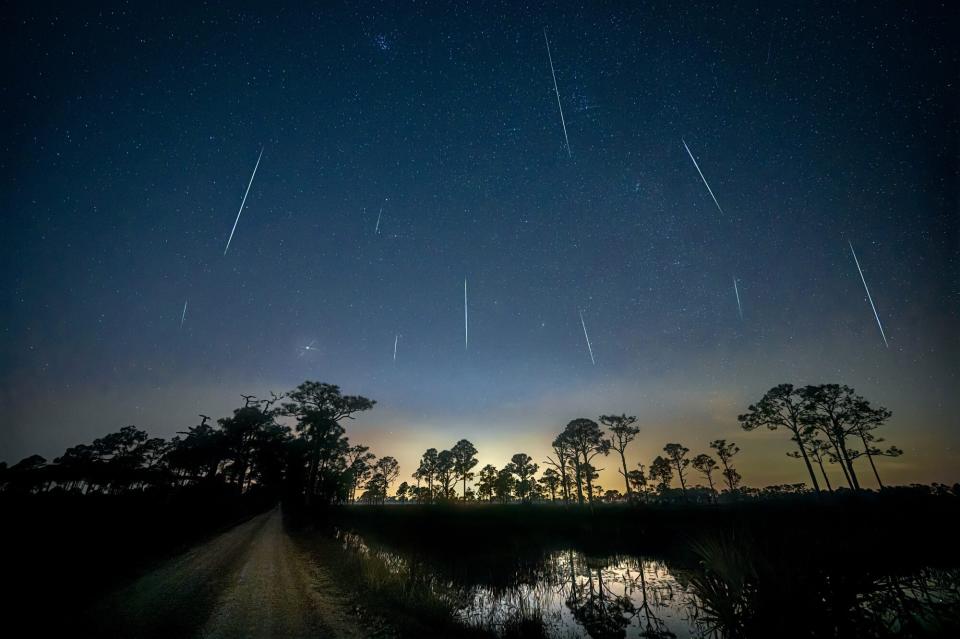Everything to Know About the Geminid Meteor Shower, Including When It Peaks and How to Watch

Getty
The Geminid meteor shower is the cosmos' early gift to us people of Earth.
Deemed the "best and most reliable meteor shower" according to NASA, the Geminids are an annual celestial spectacle that can be seen between mid November through December each year.
The Geminids don't peak until mid December — but when they do, the fascinating phenomenon can produce up to 150 shooting stars per hour under perfect conditions. However, this year's showers will coincide with a waning gibbous moon, which means the light from the moon will make it more difficult to see the meteors; observers are likely to spot more like 30 to 40 meteors as they shoot high in the Northern Hemisphere. Viewers in the Southern Hemisphere should be able to see about 7 to 10 meteors.
RELATED: Everything to Know About December's Cold Moon, the Last Full Moon of the Year
You might assume a natural occurrence like this has been around since the beginning of time, but the Geminids actually originated in 1983 when the 3200 Phaethon asteroid was discovered. Every year the Earth passes through its trail of debris, the Geminid showers result.
Known for their speed and shine, these showers typically cast a yellow hue. As for their velocity? "Geminids travel 78,000 miles per hour, over 40 times faster than a speeding bullet," the NASA website says.
From when they peak to how to watch them, here's everything to know about the Geminid meteor shower.
When does the Geminid meteor shower peak?

Getty /iStockphoto
The Geminids are expected to peak between Dec. 13 and Dec. 14 this year. Specifically, the showers will start around 10:00 p.m. ET on the night of Dec. 13 and reach its brightest at 7:00 a.m. the morning after.
One of the best parts about the Geminid shower is that they will last for most of the night, so skygazers will have multiple opportunities to try and spot a shooting star. But the show doesn't stop there!
The Geminids remain active until Dec. 17, giving star seekers a few more opportunities to catch a glimpse. However, the chances of spotting a shooting star becomes increasingly rare — so if you do happen to see one on the last night, be sure to make that wish count!
RELATED: Astronaut Nicole Aunapu Mann Says View of Earth from Space Station Is 'Absolutely Overwhelming'
How to view the Geminid meteor shower?

Getty
Simply, stargazers just have to look up in the night sky to spot a shooting star — but, there are a few tips that can help make the pinpointing process a little bit easier. For starters, situate yourself outside and away from all light pollution.
While finding a dark location is preferred, there's not much us Earthlings can due to combat the glaring waning gibbous moon — so instead of spotting 100 to 150 meteors per hour, viewers in the Northern Hemisphere are more likely to catch 30 to 40 instead.
But remember, the Geminids are known for brightness, so skywatchers are in for a good show regardless!
Where does the Geminid meteor shower appear in the sky?

MARCO BERTORELLO/AFP via Getty
Now, let's get into specifics regarding where exactly to look in the sky.
While comets are the true point of origin for meteor showers, many tend to think they come from their "radiant," or the point in the sky from which the stars appear to shoot. For the Geminids, its radiant is the constellation Gemini, the "Twins."
So it's logical to start by looking towards Gemini, but that isn't the only location at which you should be casting your eyes. According to NASA's Bill Cooke, "meteors close to the radiant have very short trails and are easily missed, so observers should avoid looking at that constellation."
(Pro tip: Lie down on the ground, adjust your eyes to the dark sky and simply take its vastness in to better your chances at spotting a star!)
What meteor shower comes after the Geminids?

Getty
Between the Geminids, the Cold Moon and the lunar occultation of Mars, the celestial scene in December is notably active — and the natural phenomenons don't stop there!
This month sees two different meteor showers; the next to take place is the Ursid on Dec. 21, 2022. Furthermore, the showers align with another cosmic display: the winter solstice (the shortest day and longest night of the year)!

